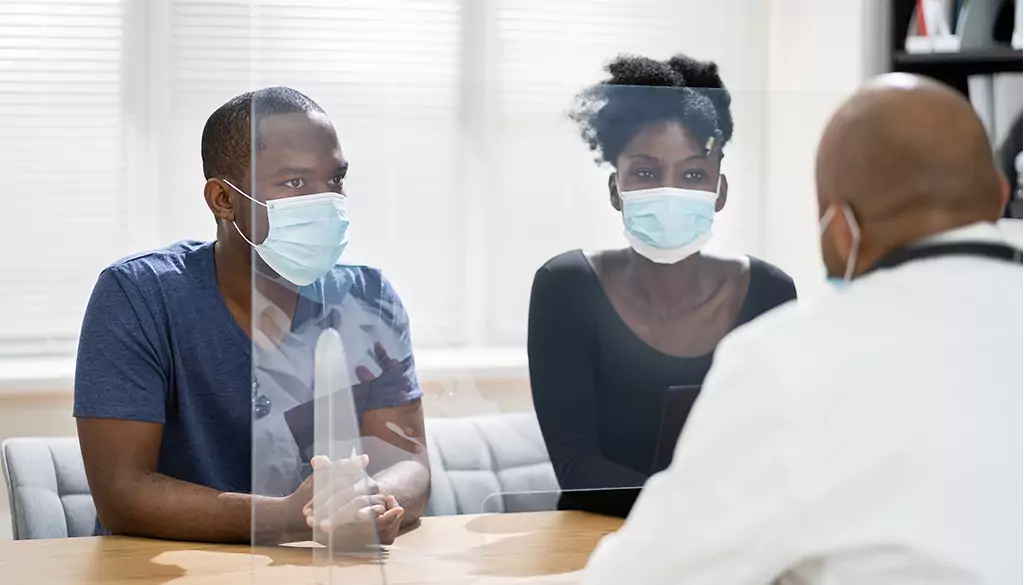Sexually transmitted diseases (STDs) are primarily caused by infections that spread through sexual contact, carried by bacteria, viruses, or parasites. These infections can be transmitted via bodily fluids like blood, semen, or vaginal secretions.
Moreover, while sexual contact is the primary mode of transmission, some STIs can spread through non-sexual means. For instance, transmission to infants during pregnancy or childbirth, through blood transfusions, or shared needles is also possible.

Notifying Partners
Informing sexual partners about an STI diagnosis is essential for their health and preventing further transmission. Clinics can assist in partner notification while maintaining patient anonymity if requested. They might also provide resources or guidance on sensitively addressing these conversations.
Understanding the characteristics, transmission methods, and treatments for various STIs empowers individuals to recognize potential risks and advocate for appropriate testing and preventive measures.
Continuously updating knowledge about emerging STI-related concerns is crucial for informed decision-making. Understanding the diversity of STIs and staying updated about new strains, treatment protocols, and emerging concerns in sexual health requires ongoing education and awareness.
This ongoing learning equips individuals and healthcare providers to address evolving challenges effectively.
When to Visit a Sexual Health Clinic
A visit to a sexual health clinic isn’t solely reactive; it’s also proactive preventive care. Even without symptoms, routine screenings are advisable, especially for those engaging in unprotected sex or having multiple sexual partners.
Clinics often offer counseling services alongside medical care, providing emotional support, guidance on safe sex practices, and strategies for disclosing STI status to partners. These additional services contribute to comprehensive sexual health care.
Benefits of Visiting a Sexual Health Clinic
Beyond swift test results and specialized care, sexual health clinics provide various contraceptive options, including long-term methods like implants or IUDs. These clinics serve as comprehensive centers catering to diverse sexual and reproductive health needs.

Additionally, many clinics offer educational resources and workshops on STI prevention, safe sex practices, and general sexual health awareness. Engagement with these resources empowers individuals to make informed decisions about their sexual well-being.
Confidentiality and Comfort
Confidentiality is paramount at sexual health clinics, offering anonymous services and ensuring a non-judgmental atmosphere for discussing sensitive sexual health topics. Patients can request language interpreters or accommodations, promoting equal access to quality care for everyone.
Patients may also find support groups or counseling sessions at clinics beneficial for navigating the emotional and social aspects of living with an STI. These resources foster community and provide valuable insights into managing and coping with STI-related implications.
Timely Medical Attention
Seek immediate medical attention if sexually active and suspect exposure to an STI or display symptoms. Early intervention is crucial in managing these infections. Additionally, it’s advisable to consult a healthcare professional before initiating sexual activity or before turning 20, whichever comes first.
Similarly, starting sexual activity with a new partner warrants a healthcare consultation for preventive purposes. Visiting a healthcare professional allows for comprehensive evaluation, diagnosis, and guidance on safe sexual practices.
Early detection and management significantly reduce the risk of complications and prevent further transmission within sexual networks. Sexually transmitted infections (STIs) and sexually transmitted diseases (STDs) are often used interchangeably, but there’s a subtle difference.

STIs refer to infections that are transmitted through sexual contact, which may or may not cause symptoms.
When an STI progresses and causes symptoms or health issues, it’s then termed an STD. Understanding the symptoms, causes, types, and treatments for these conditions is crucial for diagnosis, treatment, prevention, and overall sexual health.
Diverse Nature of Symptoms
STIs/STDs can manifest in various ways. Some common symptoms include:
Genital sores or ulcers
Pain or burning sensation during urination
Unusual discharge from the genitals
Painful intercourse
Rashes, itching, or irritation in the genital area
Flu-like symptoms (fever, fatigue, swollen glands)
Causes:
These infections are caused by bacteria, viruses, or parasites and are primarily transmitted through sexual contact, including vaginal, anal, or oral sex. Unprotected intercourse, multiple sexual partners, and sharing needles or syringes with an infected person can significantly increase the risk of transmission.
STDs often exhibit a range of symptoms or may even present no symptoms at all. Consequently, individuals might remain unaware of their infection until complications arise or a partner is diagnosed.
Types:
There are various types of STIs/STDs caused by different pathogens, including:
Bacterial infections: Gonorrhea, chlamydia, and syphilis
Viral infections: Human papillomavirus (HPV), herpes simplex virus (HSV), human immunodeficiency virus (HIV), and hepatitis B and C
Parasitic infections: Trichomoniasis
Pregnancy:
STIs/STDs can pose risks during pregnancy. Some infections can be transmitted to the fetus, leading to complications such as premature birth, low birth weight, or even birth defects. It’s crucial for pregnant women to undergo regular screenings and receive appropriate treatment if diagnosed.
Clinic Procedures
In addition to STI testing, clinics may conduct comprehensive sexual health assessments, discussing contraception, family planning, and reproductive health. Some clinics offer vaccinations against certain STIs, like HPV, providing holistic preventive care.
These clinics often operate within broader healthcare networks, facilitating referrals to specialists or additional services when necessary. This interconnectedness ensures comprehensive care for complex or persistent STI cases.
Diagnosis:
Diagnosis involves various methods, including:
Physical examination: Inspecting for sores, warts, or other visible symptoms
Laboratory tests: Urine, blood, or swab tests to detect specific pathogens
Prenatal screenings: Regular testing during pregnancy to prevent transmission to the baby
Treatment:
Treatment varies depending on the type of infection and may involve:
Antibiotics: For bacterial infections like gonorrhea, chlamydia, or syphilis
Antiviral medications: For viral infections like HIV, HSV, or hepatitis
Medication to manage symptoms: Such as pain relievers or topical creams for discomfort or itching
Prevention:
Prevention is key in avoiding STIs/STDs:
Safe sex practices: Using condoms or other barrier methods during sexual activity
Limiting sexual partners: Reducing the number of sexual partners can decrease the risk
Regular screenings: Especially for individuals with multiple partners or those at higher risk
Vaccination: Vaccines like HPV and hepatitis B can prevent certain infections
Key takeaways:
Early detection and treatment significantly improve the prognosis for most STIs/STDs. However, some infections, like HIV, remain lifelong conditions that require ongoing management. Regular check-ups, practicing safe sex, and open communication with healthcare providers are essential for a healthy sexual life.
